In 2020, 7 trends will push beauty forward.
In this paper, seven trends of beauty industry in 2020 are expounded, and the product logic and user thinking generated by backward trend will become the core of promoting the sustained and healthy growth of beauty brands in 2020 and even in the next few years.
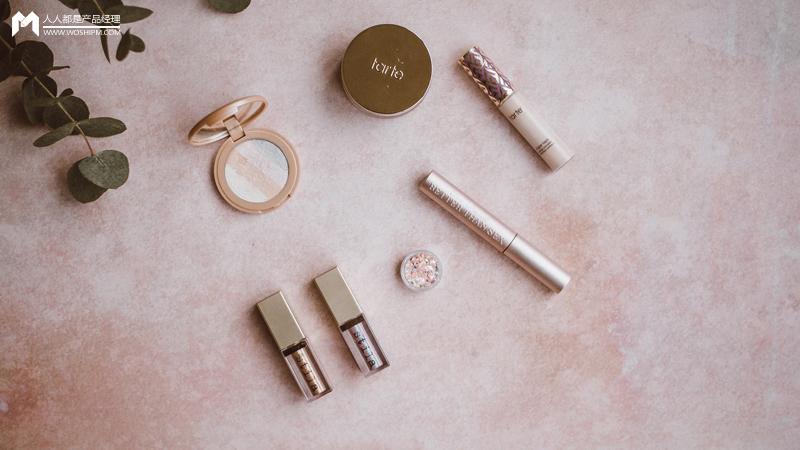
In 2019, the focus of products in the beauty industry accelerated, and the trend of "fast beauty" became more and more obvious.
Now more than ever, it is necessary for beauty companies to grasp the consumption trend first, and then influence the R&D, design, marketing, sales and service of products according to the trend insight, so as to complete the value exchange that is more in line with consumer demand. Among them, artificial intelligence and big data analysis capabilities will be extremely important in this insight mining process.
In 2020, the beauty industry is about to usher in seven significant trends. From the product to the user level, we can grasp the core insight behind the appearance to play a real value:
- Trend one: appearance-consumers value the "ingredients" of beauty; Value-the essence is the need for transparency of product information;
- Trend 2: appearance-the competition of high-end beauty brands has intensified; Value-the greater the brand value, the shorter the consumer decision-making;
- Trend 3: appearance-domestic beauty is sold out; Value-the success of localization of marketing;
- Trend 4: appearance-technology beauty trend; Value-brands no longer need to rely on KOL;;
- Trend five: appearance-the birth of day and night skin care economy; Value-looking for the collective values or behavior changes of consumer groups;
- Trend six: appearance-men start to make up; Value-the outlet of neutral beauty products has come;
- Trend sevenAppearance-young people’s skin care products are more and more subdivided; Value-the demand for beauty is meticulous, and the track is subdivided.
Beauty cosmetics may be the only industry that will not be affected too much by the economic situation.
In 2019, Kaidu reported that the beauty market in China was growing strongly, and the sales of skin care products and cosmetics increased by 13% and 17% respectively, much higher than the overall growth rate of fast-moving consumer goods. According to the data of Prospective Industry Research Institute, in 2020, it is estimated that the beauty market will reach 450 billion yuan.
The performance of e-commerce under the overall prosperity is even more gratifying. According to the data of Tmall double 11 in 2019, the turnover of Tmall beauty products exceeded the all-day record of double 11 in 2018 only in the past hour and 24 minutes in double 11 in 2019.
Looking back at the growth record of the beauty industry in 2019, it was mainly driven by the flow of stars and KOL marketing. The rise and achievements of cosmetic KOL are obvious to all. The star promotion can take the important category "facial essence" in the beauty industry as an example. Through data analysis, the time interest insight engine found that the top 10 skin care cases of facial essence on Weibo platform in 2019 were all from the cooperation between brands and stars.
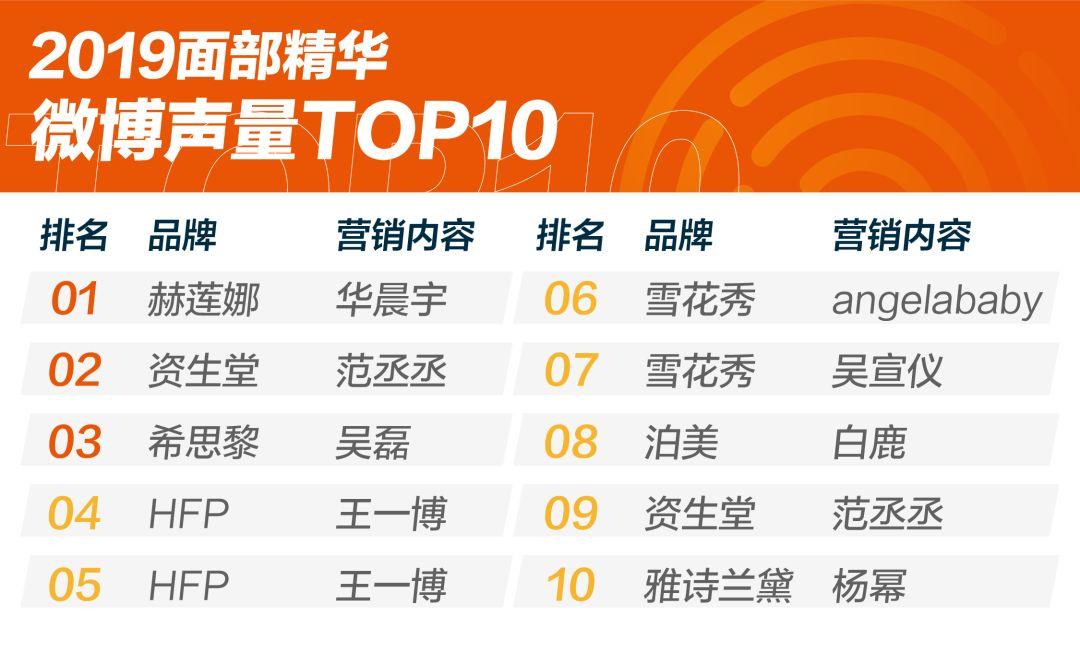
In addition to the promotion of the fan economy, the product focus of the beauty industry is also accelerating in 2019, showing a trend of "fast beauty". This means that it is obviously not a sustainable plan for beauty companies to rely too much on the traffic dividend of fan economy, and beauty brands should return to product and consumer insight.
For example, in 2019, many domestic beauty dark horses won the "localization of marketing", and male beauty users preferred "invisible beauty products". These judgments on product trends or consumer behavior trends will directly affect the product design, marketing content and other links in the whole enterprise value exchange, and thus continue to promote the progress of the beauty industry.
Through the analysis of Time Fun Insight Engine, this year’s beauty case of Time Fun and the evidence of external authoritative data, in 2019, there were seven significant changes in the beauty industry in terms of product trends and consumer trends, which may be the key to the beauty industry in 2020.
Through the analysis of the beauty industry in 2019, we can find that there are four major phenomena at the product level.
First of all, more and more consumers will value ingredients. They are proficient in skin care knowledge and hope to buy skin care products with significant efficacy ingredients. On the contrary, there are still some consumers who do not value the ingredient list, but increasingly favor high-end brand skin care products, and most of the decisions come from the brand level.
In addition to the two, domestic beauty products are rising rapidly, and there is also a shared core direction that "technical beauty" is becoming a new trend in the future.
According to the relevant investigation report published by Fit Transparency Perception Assessment Survey, more than 40% of beauty consumers believe that they have not obtained enough ingredient safety information about the beauty products they bought from the brand. 72% consumers hope that the brand can explain to them what effect the product ingredients have; More than 60% consumers hope that brands can authenticate the source of product ingredients.
Consumers need to understand what is behind the ingredients, which actually expresses that they not only care about what is contained in the ingredients, but also care about what is not contained in the ingredients. Consumers attach importance to the relationship between cosmetics and skin health, mainly in safety and efficacy.
1) Pay attention to safety
For many people with sensitive muscles found by the time-interesting insight engine, their skin care pain points mainly include: skin irritation, allergies, dryness and so on. For them, whether it is skin care products or cosmetics, natural and organic ingredients without irritation will become their first choice. According to CB Insights research data, the overall capacity of the global natural organic beauty market is estimated to reach 22 billion US dollars.
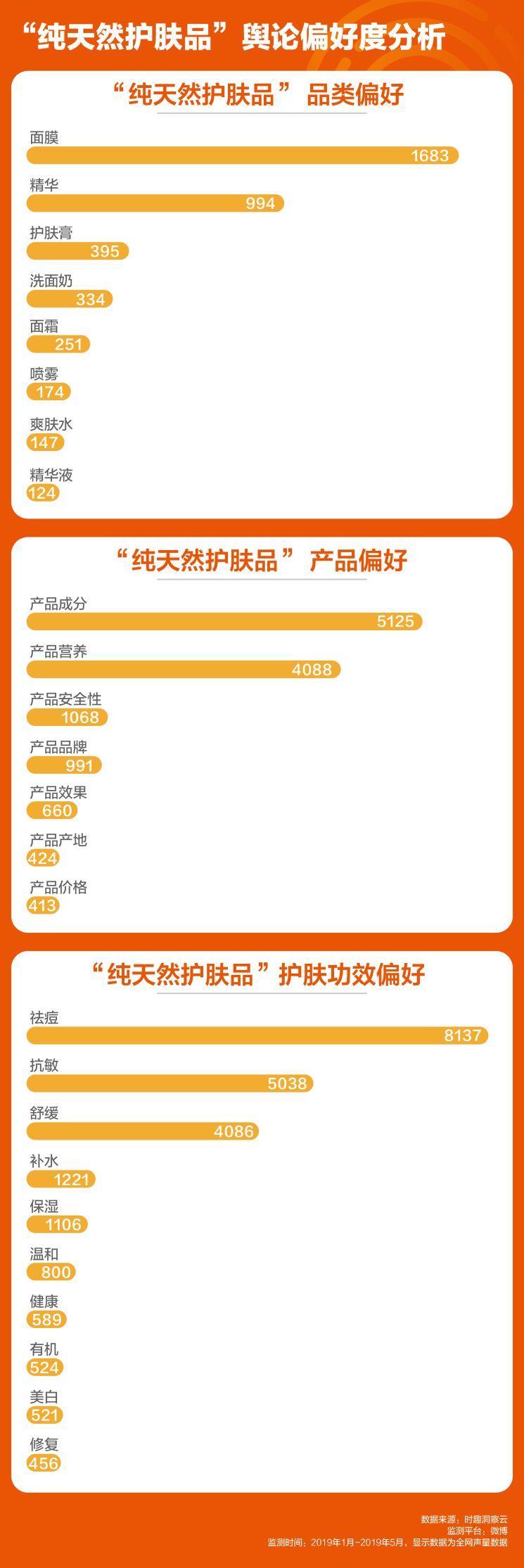
2) Pay attention to efficacy
On the other hand, it is often because consumers are more and more aware of all kinds of skin care knowledge, which requires more clear efficacy of ingredients.
In September this year, when monitoring some beauty brands on the whole platform, Time Fun Insight Engine found that the related words of "fruit" were rising rapidly from the waist and tail of high-frequency words through machine insight, precisely because consumers valued their "antioxidant" and "anti-wrinkle" effects.
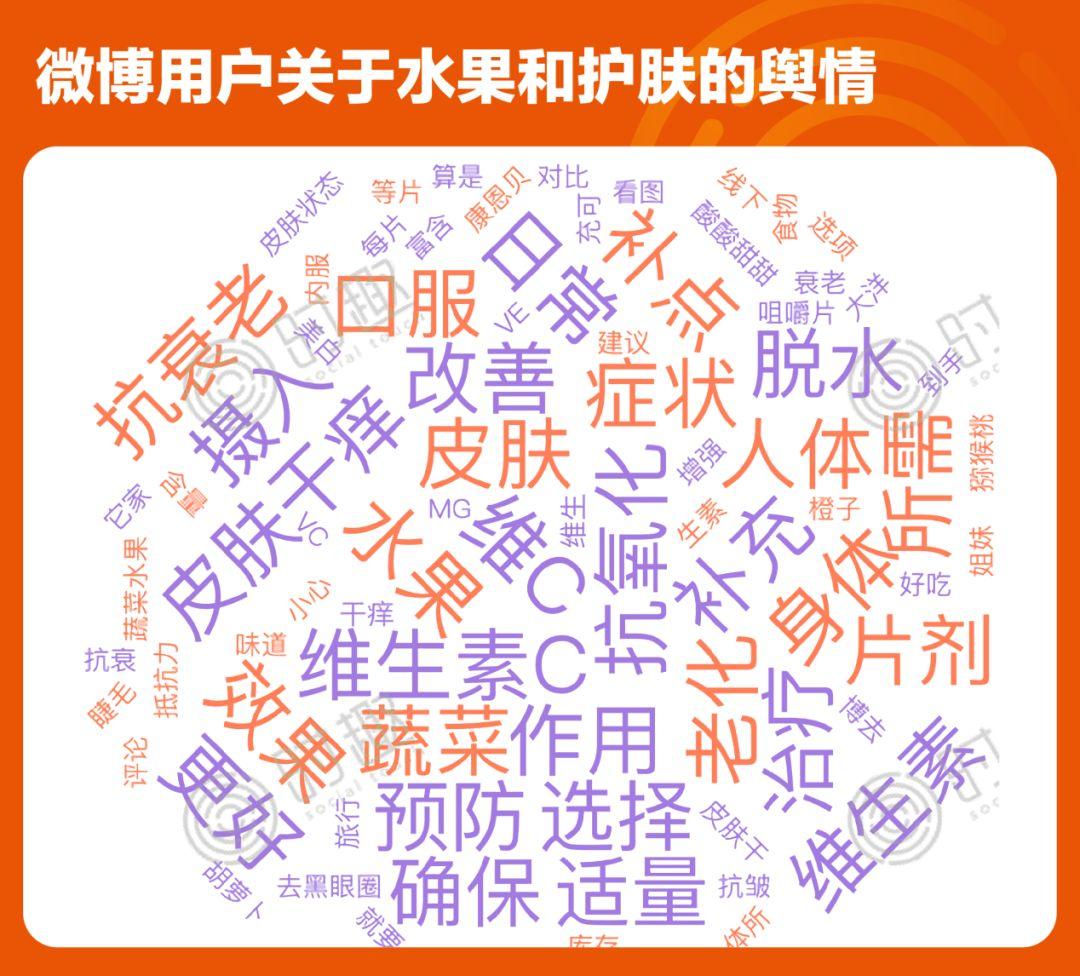
Among this year’s brands, both the Oriental overseas and the HPF at home are emerging brands with simple and transparent main ingredients. Well-known brands such as OLAY are also loved by the market because of the whitening effect of nicotinamide. With the online celebrity product effect of successful brands and more and more popular science of KOL, consumers will pay more and more attention to ingredients.
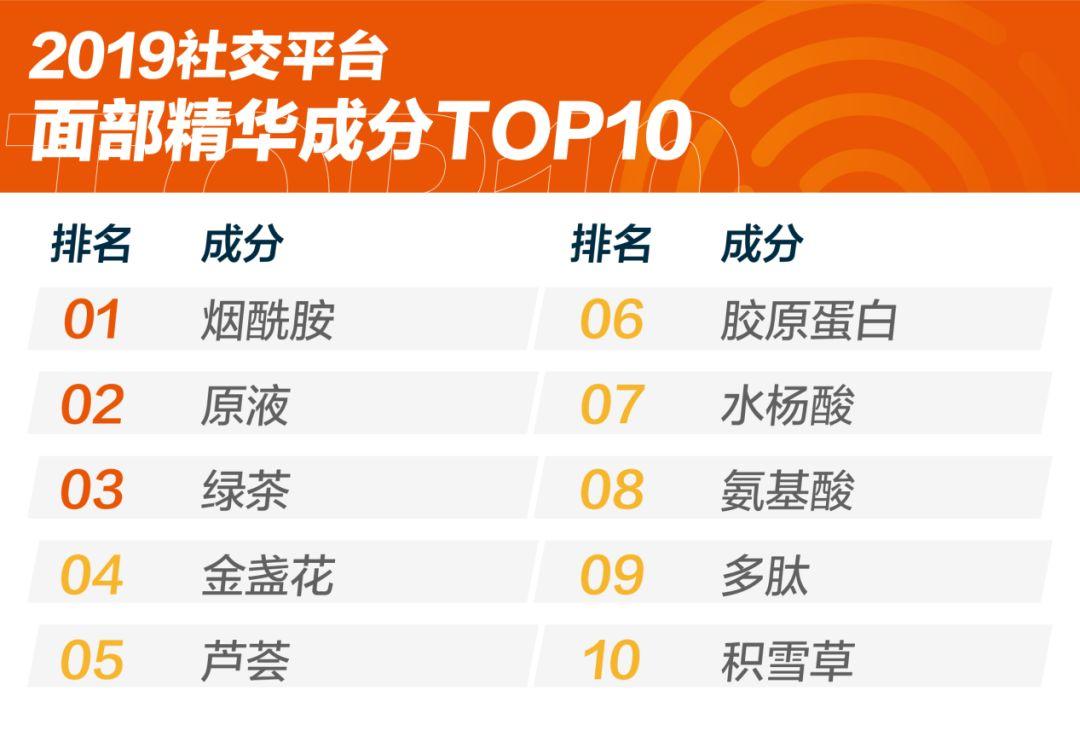
Top10 丨 Data Source Insight Engine, the Essence of 2019
Back to the end, the essence of consumers’ increasing attention to ingredients is that they need to know the efficacy, the risks and more transparent product information. Under transparency, ingredients will also become extremely important, and brands need more scientific ingredients to guide them.
The more expensive it is, the better it sells. In the China market where high-end skin care and beauty cosmetics are highly sought after, beauty giants are constantly introducing high-priced products to gain market share.
According to relevant data, it is predicted that the consumption of high-end cosmetics in China will increase by 8.8% in the next five years, and the proportion of high-end cosmetics will increase to 24% by 2021.
In brand data, high-end cosmetics owned by L ‘Oré al Group, Estee Lauder Group, LVMH and Chanel have always accounted for about 70% of global sales. Now many luxury brands, including Burberry and Hermes, have also started to enter the beauty business. The whole beauty market and luxury goods have begun to combine more and more, which also shows that the competitive environment of high-end beauty brands will become more and more harsh.
At the user level, consumers have strong consumption power for high-end beauty.
According to the "Picture Book of 2019 High-end Beauty Consumer Women" released by Tencent, one-third (about 90 million people) of female netizens aged 15-55 in China pay for high-end beauty cosmetics, and the whole market size is about 90 million. The age groups of high-end beauty users are also very scattered, including not only white-collar workers with high consumption power, but also 18% student parties. As the main consumer, first-tier cities spend 5,700 yuan per capita on beauty and skin care products every year, and they also have a common consumption feature: high loyalty to skin care products, low loyalty to beauty products and preference for early adopters.
High-end beauty consumers are becoming more and more complex, but their decisions are generally inclined to think at the brand level.
In terms of consumption behavior, the "constituent party" often follows the path of KOL recommendation, user word-of-mouth influence, search judgment and so on. However, among consumers who value "high-end products", brand preference often shortens decision-making time, instead of doing too much search or comparison.
Therefore, beauty brands must combine brand building with sales transformation.
According to the "Insight Report on Domestic Beauty in 2019", more than 42% of consumers prefer to choose domestic beauty; And 60% of consumers said that they would like to buy it again after experiencing the national makeup for the first time.
In the category of skin care products, seven of the top ten brands selected by consumers in China are domestic products (Baique Ling, Dabao, Appropriate Herbal Medicine, Kanshu, Yiye, Natural Hall and Shuipin). In the beauty market, skin care products have always had a place of China brand.
However, in the cosmetics category, it is really not easy for China brand to become a rising star, especially for the two brands that are hot this year: Perfect Diary and Hua Xizi. Their success is inseparable from "cost performance" and even more inseparable."Localization of marketing".
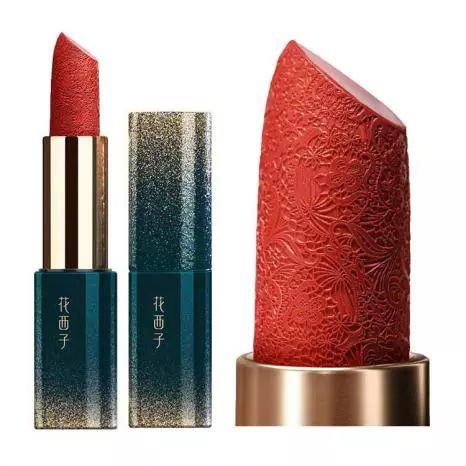
Image source: Huaxizi product map
Among them, the cost performance is very easy to understand, which is caused by the lack of brand power when competing with high-end beauty products, so we have to temporarily emphasize the cost performance. But the core is still because of "localization of marketing", the perfect diary is popular by planting grass in little red books, and Hua Xizi wins in the national tide and national wind.
It can be seen that in the huge consumer groups, combined with the characteristics of the China market, marketing by subdividing platforms or people can also create a brand recognized by the whole people.
The rise of localization of marketing has a natural advantage for domestic brands. They can often get familiar with the China market and communication trends more quickly, and can make use of fancy marketing such as social networking, KOL, variety IP, etc. to achieve rapid sales growth first, and also slowly accumulate brand growth. At present, the market share of domestic beauty brands has reached 56%, accounting for half of the China market.
Today, consumers pay more and more attention to the scientific skin care, and they are eager to know as much as possible about their skin, so as to obtain customized and targeted skin care products, which is the essential reason for the rise of KOL. The brand therefore spends a lot of budget on KOL, which may be completely changed with the arrival of skin care technology in the future.
In 2019, Shiseido Japan launched skincare black technology, a personalized skincare system Optune based on the Internet of Things. Users upload photos to the APP, and measure the skin texture, pore size, skin moisture content and other information through the APP. After analyzing the skin data, they will analyze it again in combination with the temperature, humidity and ultraviolet rays of the day, and even judge according to factors such as mood. After a lot of analysis, Optune Shot, which is filled with different essences and cream raw materials, will combine the two data to prepare the essence and cream that only belong to the user’s current skin condition.
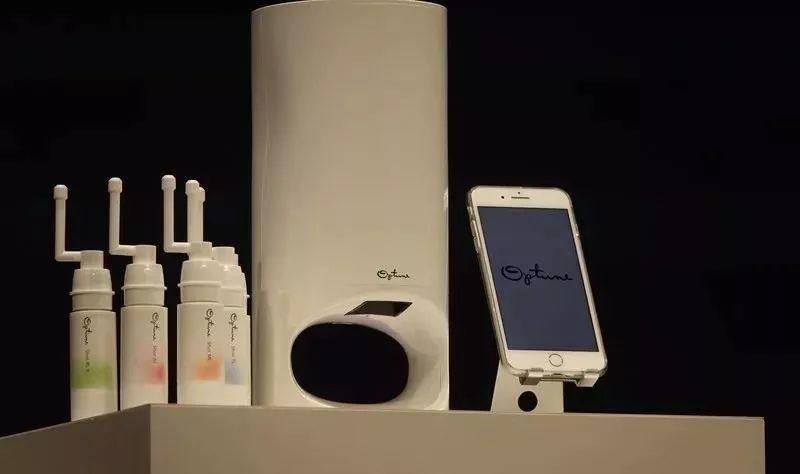
Optune can provide 1000 different combinations, which will make customization to the extreme, not only by skin type, but also by time period, mood, weather and so on. In addition, Neutrogena also plans to introduce the first customized 3D printed mask into China in 2020; L ‘Oré al has also launched customized foundation services such as My Little Factory.
From the trend, skin care technology meets the needs of consumers who want to know their own skin and need more scientific and customized skin care. For skin care and beauty enterprises in the beauty industry, skin care technology will become an important direction, and it can even directly defeat skin care KOL in the future.
As product trends change, consumers themselves are becoming more and more changeable.
They collectively stay up late and worry about the environment. Men not only care for their skin, but also learn to make up. The younger the consumer, the more painful it is. Brands need to further analyze the collective changes of consumer groups and find opportunities for brands to break through in the demand segmentation.
Every generation of consumers are faced with different social environment and living environment, and their behaviors or values are also changing.
In the environment, with the greenhouse effect of climate, consumers need to experience thinner and lighter beauty products; With the awakening of global pollution and environmental awareness, the younger generation of consumers will pay more attention to environmental protection, and they will prefer environmentally friendly beauty ingredients that will not pollute the environment.
In terms of behavior, this generation of young people, whether they are playing drama in bed or going crazy in nightclubs, are gradually becoming late-night people and choose skin care solutions for staying up late.
Take staying up late as an example. This young consumer is really diligent in skin care while staying up late tirelessly.
According to the 2019 National Health Insight Report, 75% of the post-90s generation didn’t go to sleep until after 11 pm. Staying up late is becoming a retaliatory or compensatory living habit of contemporary young people. But after staying up late, they also began to worry about what to take to appease their uneasy body and mind.
As one of the most concerned focuses of people who stay up late, beauty has also undergone some changes.
According to Ali Big Data, among female white-collar workers aged 25-29, they often purchase "essentials for staying up late" every month, including eye mask, facial mask, skin care and nutrition products, etc., and the cost is mostly concentrated between 1,000 and 2,000 yuan.
After monitoring the social platform in 2018, Time Fun Insight Engine extracted 20,000+pieces of data in proportion. After analysis, it found the following insights: after 85, 90 and 95, the age of people who mentioned staying up late for skin care was the most, while the population between 90 and 95 accounted for nearly half of the country. They are young people who are enjoying the flower season, and most of them are white-collar workers who are on the rise in their careers. Their spending power is average, and they are most willing to buy mask products.
In the data of the time interest insight engine, acne, dryness, dark circles, pores and dullness are the biggest problems faced by the staying up late party; Among them, the problem of acne is very prominent. It can be seen that after the brand associates anti-acne ingredients with staying up late, it will have a great probability of being popular.
Stay up late as a sub-field. In 2019, many brands also realized this feature and launched many remedial products, such as eye cream, bottles, etc., and even health products.
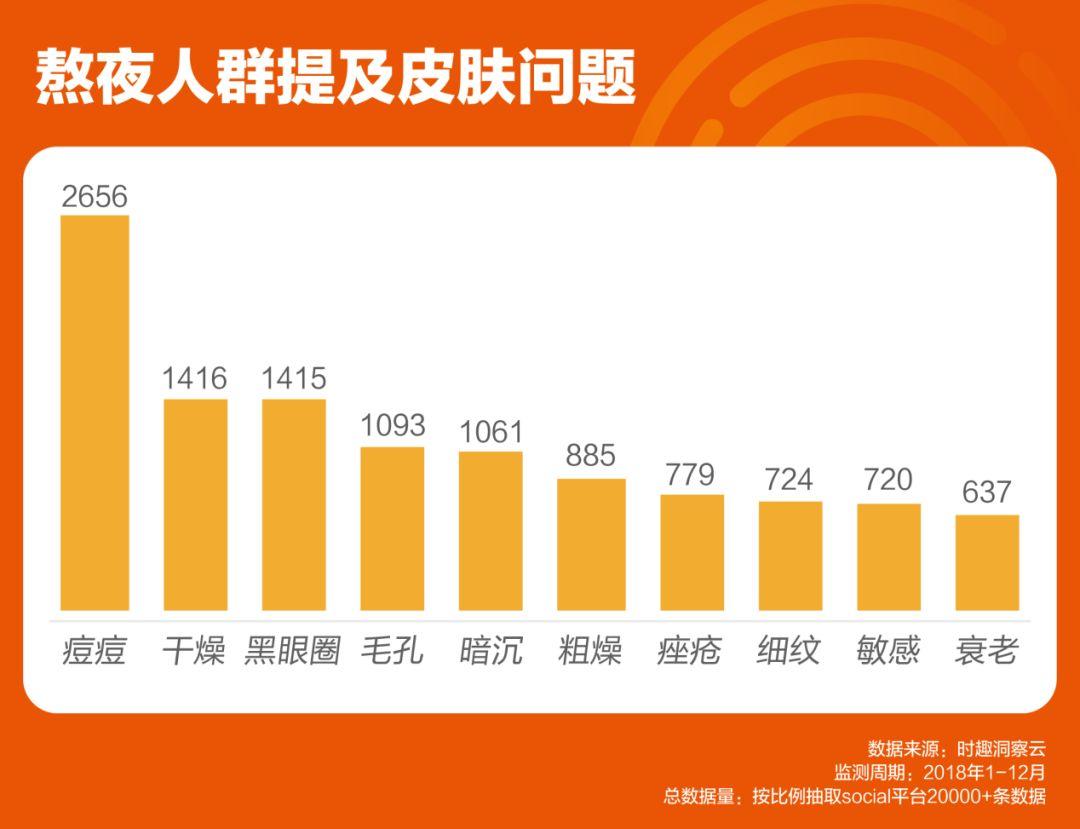
It can be seen that brands can find the blue ocean of the market if they can clearly understand the changes in consumer behavior in groups, including the changes in values.
Men’s skin care has gradually become the norm, but further, more and more men have begun to make up.
According to the relevant data released by Taobao, the turnover of men’s make-up in Taobao has increased year by year. In the recent three years, the beauty trend report released by Tmall also shows that the consumption of men’s make-up has maintained a continuous three-digit growth.
But the characteristic of men’s beauty cosmetics is that they just want to repair their faces, but they hope not to be seen.
In Taobao data, foundation, concealer and eyeliner are the top three most popular makeup. Among the top 10 men’s make-up sales in double 11 in 2019, 7 are plain cream. Therefore, the colleagues you may see every day, in fact, have already done a lot of make-up.
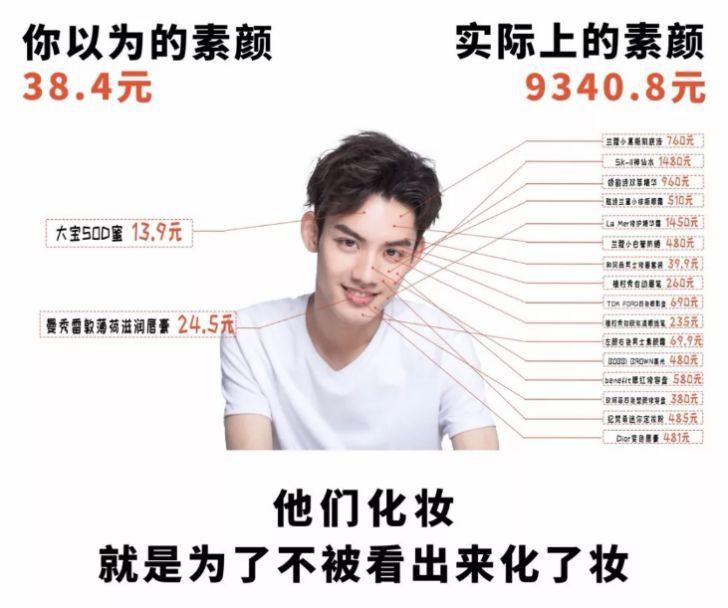
Tuyuan Taobao data
The rise of male make-up is actually paving the way for the neutral make-up market, and there will be more and more inclusive products mixed with men and women or with multiple genders.
Now big brands such as YSL and Clinique are providing make-up products for men, and MAC, Tom Ford and Marc Jacobs have all launched neutral make-up product lines. Even Chanel launched the first men’s cosmetics series Boy de Chanel in 2019, including four-color liquid foundation, matte moisturizing lip balm and four-color eyebrow pencil.
At present, male skin care has matured, and male make-up is becoming another fast-growing track. For men, those products that can’t see the makeup, but can really help improve the face value, will be more loved by male users.
Market segments also come from the division of age groups. For example, in the eyes of post-90s girls, their beauty and skin care pain points include: cleaning strength, eye circumference, wrinkles, spots, drooping, dryness, sensitivity, dullness, lip hair, lip lines, pigmentation, red blood and so on. Among the middle-aged and elderly people, after 60 or 70 years of establishing skin care and beauty habits, their skin care needs will not only be limited to anti-aging; According to their skin condition, whether we can develop more kinds of beauty products will become a new track and a new growth point.
Take the post-90s generation as an example. In their eyes, the mask is already the foundation, while the hand mask and foot mask are exquisite.
Through the time interest insight engine, it is found that there are 19,150 users discussing the mobile phone film in Weibo’s public opinion in the past three months, and the post-90s generation (including post-90s generation) accounts for 61% of the total. The age group of users who mention the foot mask is also concentrated in the post-90 s, accounting for as high as 65%, and their demand for foot skin care is still very subdivided, mainly focusing on calluses, dead skin, moisturizing, whitening, fine lines, and paying special attention to heels-it can be said that various problems on each piece of skin can be the reason to buy products.
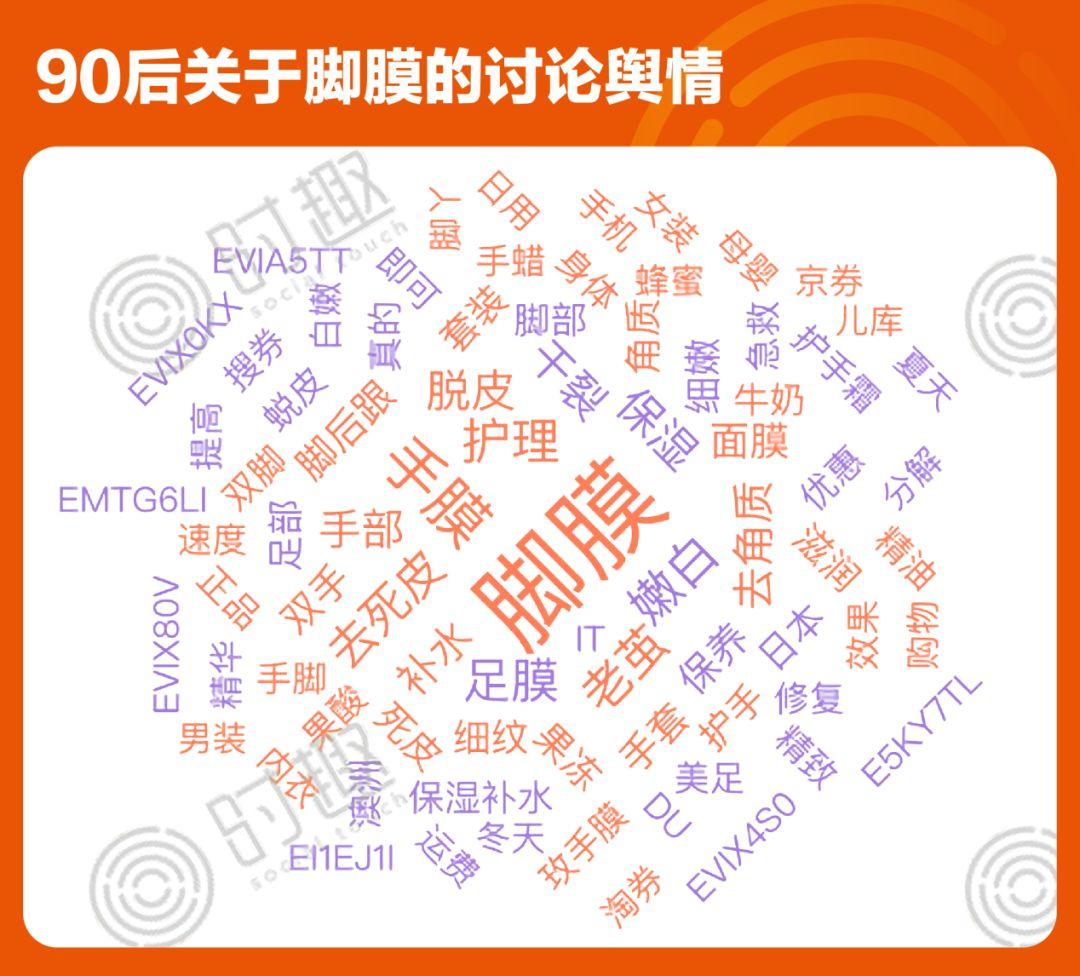
After 90, consumers mentioned the problem of foot membrane.
At the same time, in a country where the population over 60 years old has reached about 250 million, brands should also meet the needs of beauty and skin care for the elderly besides anti-wrinkle.
After the disappearance of the demographic dividend, the elderly group has become a new driving force for the growth of the Internet economy. According to relevant data, 96% of them use smart phones every day, 40% said that they usually buy online, such as Taobao and Pinduoduo, and 48% said that they usually pay online, such as Alipay.
The beauty pain points of middle-aged and elderly people are also rolling in the dark, which are the directions for brands to consider product layout in the future.
In 2019, beauty brands won an epic victory under the arduous traffic competition.
Among the seven trends in 2020, ingredients, brand competition, localization of marketing and the coming of science and technology can be used as long-term plans, which will affect the thinking of beauty companies in brand building and product design; In the change of group behavior values, neutral beauty makeup and pain points are refined, which also provides more and more subdivided tracks.
The product logic and user thinking generated by backward trend will become the core of promoting the sustained and healthy growth of beauty brands in 2020 and even in the next few years.
The reference data in this article comes from:
Time interest insight engine;
Kaidu "2019 Beauty Market Trend Report" and "China Beauty Brand Ranking";
Prospective Industry Research Institute "2019 China Beauty Industry Market Analysis";
Taobao "China Male Consumption Report" and Taobao Tmall double 11 data;
Tencent "2019 High-end Beauty Consumer Women’s Picture Book"
CBNData
Authors: He Kailong, WeChat official account: Time Fun (ID: Socialtouchst)
This article was originally published by @ 么么么么么么么么么么么么么么么么么么么么么么??么 Reprinting is prohibited without permission.
The title map comes from Unsplash and is based on CC0 protocol.